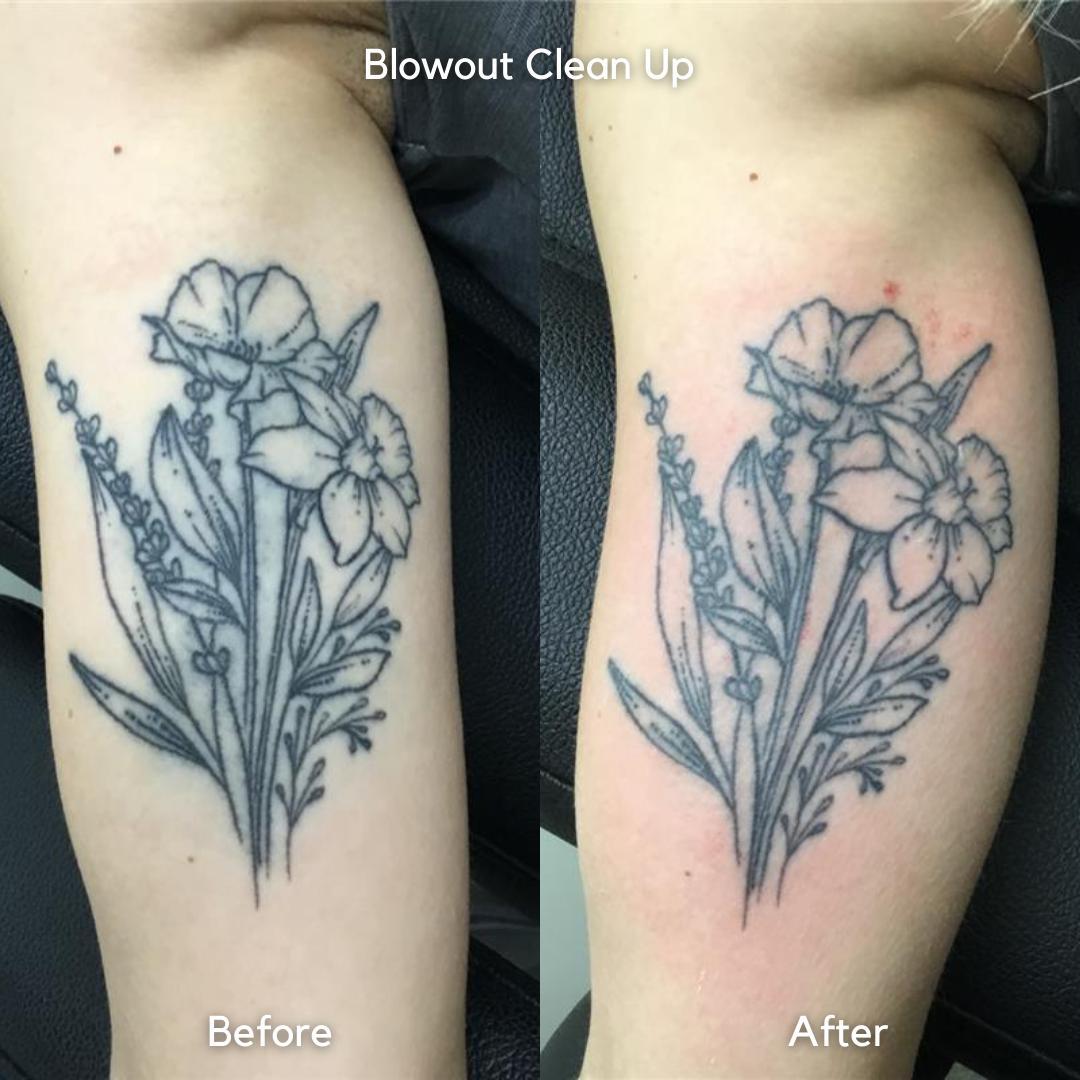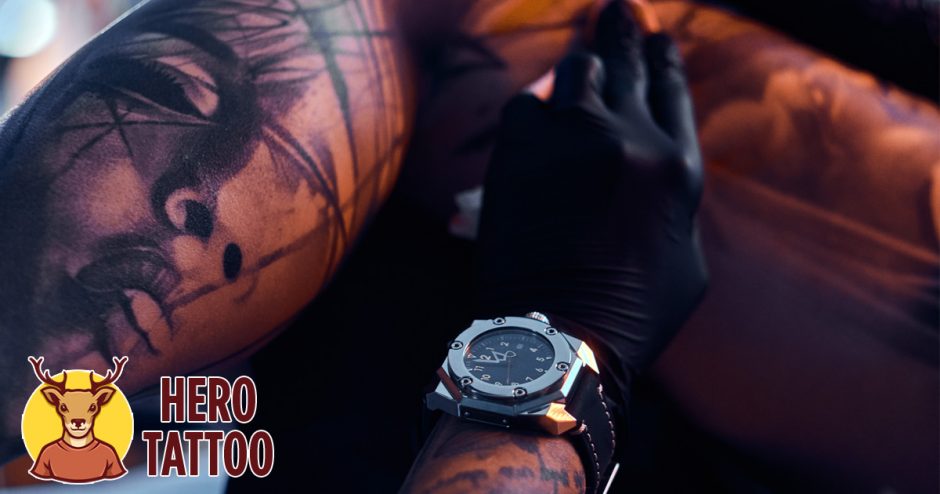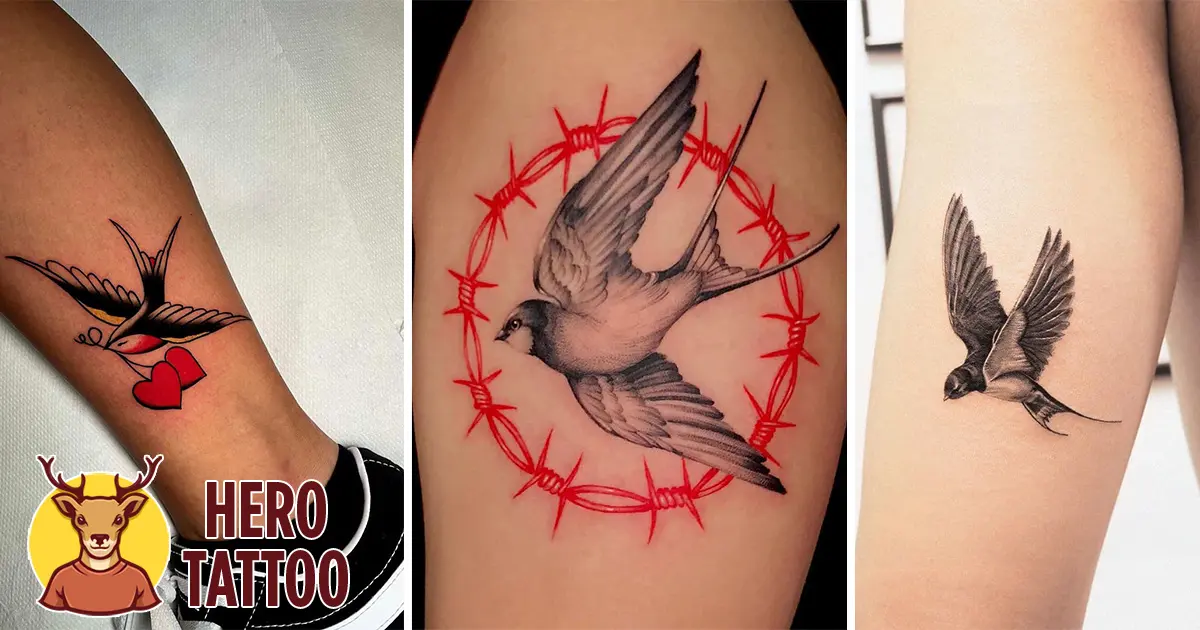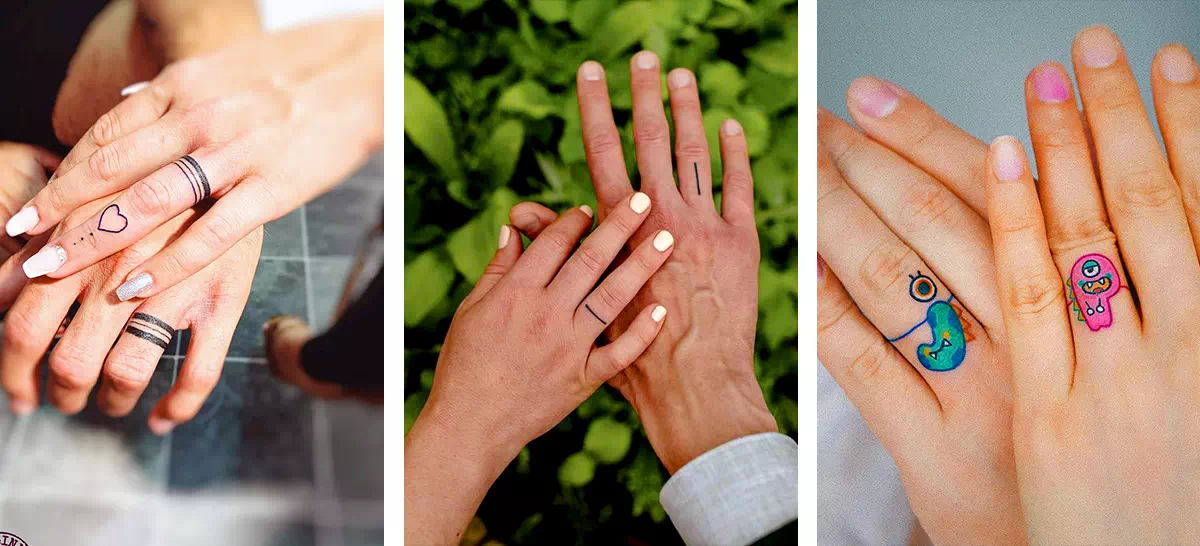You’ve recently gotten a new tattoo, and it’s stunning. It’s only after a few days that you realize that the tattoo’s appearance is becoming increasingly smeared, and it’s even beginning to spread. When faced with such a predicament, the first thing that most people would do is panic (understandably). However, there is no requirement for this. You need to learn about tattoos that don’t work and how to tell when a tattoo is healing.
Blowing out a tattoo is a term used to describe how the tattoo becomes smeared, obscured, and spreads over the body. It is merely going through its healing process if the tattoo starts to feel dry, scabby, and itchy after a while. Lastly, and most importantly, if the tattoo is always red and swollen, you suffer from a tattoo infection, requiring immediate medical care and treatment.
With that in mind, let’s look at the indicators of a blowout and the healing process of a tattoo. We’ll also look at how these issues may be reduced, controlled, and dealt with.
5 Things to Consider Before Getting a Tattoo Blowout
1. What Is a Tattoo Blowout?

Whenever you discover that your tattoo is becoming fuzzy, smeared, or spreading, you’re most likely in the midst of a tattoo blowout. Please understand that this is not a life-threatening or life-threatening condition, so don’t panic just yet. There are several options for treating or covering a blowout, especially if the disease is moderate.
2. What Causes It to Take Place?
Tattoo blowouts aren’t examined since individuals don’t often report them when they happen. However, we now believe that they occur due to the tattoo needle penetrating too deeply into the skin, burrowing under the surface layer and into the fat beneath the surface layer. Because the fat beneath the tattoo creates an unregulated environment for the ink, the ink begins to expand and extend beyond the surface lines of the tattoo, causing the tattoo to fade. Here is a list of the most common reasons why a blowout occurs:
- The tattooed region is bony, and the skin is relatively thin.
- During the tattooing process, the skin was stretched excessively.
- The tattoo needle was put into the skin at an awkward and slanted angle, which caused discomfort.
- The tattoo artist sank the needle too far into the skin during the procedure.
- A great deal of movement occurred throughout the tattooing process.
Consequently, after many days, your first flawless tattoo gets fuzzy, and the edges begin to expand due to this. The entire image might be moderately or severely deformed, depending on the distortion. Blowing out situations is more common in older people, whose skin is more stretched, less elastic, and more brittle than younger ones. Nonetheless, it can occur in skin that is younger and more elastic.
3. Is it the tattoo artist’s fault if a tattoo blowout occurs?
Tattoo blowouts are most often the consequence of the artist’s inexperience or just shoddy work, which is true in most situations. Because the tattoo artist was not paying attention, the needle penetrated too far into the flesh. Furthermore, it is likely that the artist did not inform you of the possibility of anything like this occurring and what you should do in such a situation.
Before you get a tattoo, your tattoo artist must explain everything tattoo-related to you, including the positive and negative aspects of the tattoo. They must underline that they are either inexperienced or do not know how to perform a specific tattoo. As a result, individuals are forced to deal with tattoo blowouts, which may be a costly and long-lasting problem to cope with.
4. What Can You Do to Make It Better?
- Tattooing Over The Blowout
Let us begin by stating that fixing a blowout with another tattoo is the least expensive method of rectifying such an error. According to the tattoo’s size, kind, and placement, it will cost you anywhere from $50 to $400. The severity of the blowout and the degree to which it has spread are other factors determining the price. Sometimes a tiny tattoo might suffer a major blowout, which doubles the tattoo’s size and raises the expense of repair. ‘
To be safe, your tattoo artist will need to make the cover tattoo a deeper shade than the original one if there is a severe blowout. It will also be designed in an entirely new manner. The tattoo artist may attempt to merge the blowout tattoo into the new design to make it appear seamless.
- Laser Correction
Laser correction is likely to be on the more expensive side. Nonetheless, it is one of the most successful methods of repairing the blowout and eventually leaving you with the tattoo in the condition for which it was intended. As the name implies, Q-switched lasers are meant to shoot out energy beams that spread ink into the deeper layers of the skin, removing any extra ink that is left after a blowout.
This strategy will be pretty successful in fading blowouts, but it may not be helpful in all fading blowout situations. Furthermore, it may take numerous laser correction sessions to get the desired results. In other circumstances, it may take even more sessions depending on how the laser reacts to the link in question. Another factor to consider is that, as previously said, laser correction is an expensive surgery; you should expect to pay up to $500 for each session or treatment, and most insurance companies do not cover these sorts of cosmetic treatments.
- Surgery for Tattoo Removal
Surgical tattoo removal is only used in the most severe circumstances of a tattoo blowout and should be avoided. This is a highly intrusive way of correcting or removing a blowout, so it should only be a last resort in extreme cases. The method is to cut off your tattooed skin and sew the rest of your skin back together.
However, the surgery is invasive, but it is also costly since most insurance companies do not cover these sorts of cosmetic or aesthetic surgeries, making it even more expensive. We do not advocate this surgery since it is associated with many negative consequences. Scarring, a delayed healing time, and widespread pain are all possible consequences. You’ll wind up with a wound rather than a tattoo, especially if the blowout was significant and spread out over a long period of time.
5. What Can You Do to Avoid a Tattoo Blowout?
- A professional tattoo artist should be sought out since a blown-out tattoo is usually a product of the artist’s inexperience or poor work. So, if you want to avoid a blown-out tattoo, work with a highly competent and experienced tattoo artist. The artist should be appropriately licensed, and their shop and equipment should be clean and sterilized. Yes, you will almost certainly pay more for a tattoo done by a professional. Still, it will be less expensive than dealing with a blowout.
- The right body placement should be considered since having a tattoo in an area where the skin is thin increases the likelihood of a blowout. The lighter the skin tone, the simpler it is to go too far into the skin and ink behind its outer layer of protection. As a result, it is advisable to acquire tattoos in locations where the skin is thicker and the fat layer is more visible. Upper thighs, calves, buttocks, abdomen, and other such areas are examples of such places.
- You should avoid scratching the tattooed region immediately after getting a tattoo. Still, you should also avoid stretching and tugging on the tattooed skin. Pushing and pulling on the tattoo can encourage the ink to spread beyond the tattoo lines, resulting in the “blowout” appearance. It will also make the healing process longer and the risk of infection more likely, especially if you touch the tattoo right before you clean it.
Tattoo Healing: A Quick Look at the Process
So, now that we’ve discussed the phenomena known as “tattoo blowout,” you’re probably relieved to know what it is and why it happens. But, to be sure, we’ll go over the indicators of tattoo healing to make sure you understand the distinction between a blowout and the healing process.
1. Tattoo Healing Signs
- Bleeding, swelling, and inflammation are expected during the first few days after getting a tattoo. Your tattoo is still an open, fresh sore. There will be some minor bleeding, leaking, edema, and a small amount of irritation after the procedure. Even though these may not appear to be healing indicators, your body and skin are dealing with the skin damage in a way that requires things to get worse before they can get better. Naturally, let us assume that these symptoms last for a week or more. There is a possibility that you will get a tattoo infection, which will require quick medical treatment.
- Itching, scabbing, and tenderness are symptoms of a tattoo that is healing well. Besides being extremely itchy, the tattooed region has also developed scabbing. Of course, the location has become painful as well. At this point, your aftercare regimen must step up to the plate, so make sure you cleanse the tattoo, moisturize it, and do all of this after washing your hands before continuing. Make sure not to scratch, peel, or pick at the tattoo while itching. As a result, the healing process will be dragged out for longer.
- At this point, it has been many weeks since your tattoo was applied, and the ink is beginning to fade away. Fortunately, the scabs are falling off, the skin is not irritating, and the region is just moderately painful. You’re starting to see your real tattoo, and the newly developed skin is bringing it to life and making it seem fantastic. Maintain your aftercare regimen and apply sunscreen to your tattoo if you plan to be outdoors; exposure to the sun might dull your tattoo and cause it to fade quicker than you expect.
2. How long will it take for the tattoo to heal?
Tattoo healing is dependent on a variety of factors, including, for example, the following:
- This depends on how diligent you are with the aftercare process.
- You can choose to scrape and peel the tattoo or not.
- Whether or not you’re eating correctly and taking good care of your health is up to you.
- Whether you want to conceal the tattoo with clothing or use sunscreen to keep it safe from the sun,
- It doesn’t matter if you dress in loose clothes or not.
- Last but not least, is the location of the tattoo.
However, taking all of these factors into consideration, your tattoo should be healed in one to two months (on the surface of the skin) and up to six months (in the deeper layers of the skin) (thoroughly and in-depth). Following the tattooing process, adequate aftercare and diet can help to speed up the healing process. Make sure to take good care of both the tattooed region and yourself.
3. Is it possible to confuse healing with a tattoo blowout?
Given the similarity between the tattoo blowout and the healing symptoms, we may conclude that it would be difficult to confuse them. A tattoo blowout and a merely healing tattoo are two very different things that express themselves differently and occur for entirely different reasons. If you’re still not sure how to tell the difference between a blowout and the symptoms of healing, here’s what to look for:
Tattoo Blowout
- There is no harm to one’s health.
- It is possible to remedy it by using laser correction or tattooing over it.
- It doesn’t harm or cause irritation in any way.
- A tattoo artist’s error or a lack of skill causes this.
Tattoo Healing
- When used correctly, it poses no health risks.
- If done incorrectly, it might result in an infection.
- It can last for many weeks or even up to six months.
- It is necessary to follow up with aftercare and to handle tattoos properly.
- It is a very routine procedure.
- Healing problems and infections are caused by a person’s failure to provide proper aftercare.
Finally, remark that
Tattoo blowouts aren’t as prevalent as they were, mainly because tattoo artists now have to undergo considerable training to obtain a license. However, there is no assurance that you will not suffer a tattoo blowout due to this. It may be readily corrected using laser correction, or it can be covered with another tattoo if necessary. Tattoo blowouts are fundamentally different from tattoo healing in their overall effect. So, we think we’ve at the very least cleared things up on that front.
Just remember, if you want to avoid a tattoo blowout, you should always work with highly competent tattoo artists, even if that means spending a little more money upfront. For best results, take careful care of your tattoo and leave it alone; avoid scratching, picking, or peeling the tattoo to allow it to heal correctly. If this is not done, the healing process will take significantly longer.
It is better to give than to receive!






